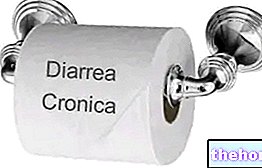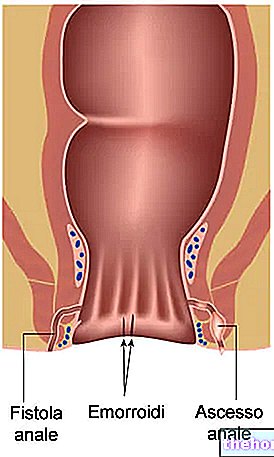- Cassia acutifolia Of the. (= Cassia Senna L.);
- Cassia angustifolia Vahl (= Tinnevelly senna or Indian senna).
Today grouped under the scientific name of Alexandrian Senna Miller (Leguminosae family).

Brief Description Botany
Small erect shrubs (1-2 m) originating from East Africa and India. Pale green stem, with long erect branches, compound leaves, paripinnate (4-8 pairs of leaflets), alternating.
Yellow flowers gathered in terminal clusters.
The fruit (or pod) is a legume that ends with a tip, residue of the stem.
, the senna is probably the most used and also the most studied. Like other drugs characterized by the generous presence of these active ingredients (aloe juice, cascara, buckthorn, rhubarb), senna is used in the presence of constipation (after medical advice).
Considering the quite strong laxative effect - not as mild as that of buckthorn or cascara, nor as marked as that of aloe juice - senna is used for short-term treatments (one or two weeks), in case of acute constipation. .
Sennosides: how do they work?
The active anthraquinone principles that characterize senna are called sennosides A and B; in fact they are diantronic glycosides, contained in percentages around 1.5% -3% in the leaves and 2.5% in the fruits (where they are concentrated at the pericarp level).
In the phytocomplex we also find small quantities of C and D sennosides, monomeric glycosides and free anthraquinones (aloe-emodin, chrysophanol, rein). Among the other constituents we remember mucilages, flavonoids, polysaccharides, acids and mineral substances.
The sennosides, in themselves inactive, actually behave like prodrugs; in fact, they acquire a laxative action only after being metabolized by the intestinal bacterial flora, which frees the aglycones (non-sugary parts of glycosides) and transforms them into reinantrone and reina anthrons, through a series of intermediate steps.
Rein, which represents the characteristic active ingredient of senna, is poorly absorbable and acts in situ by enhancing the secretion of water and electrolytes in the intestinal lumen, inhibiting their reabsorption and increasing the enteric content, which in fact represents a great stimulus for the increase. of motility of the large intestine. Due to this particular mechanism of action, senna belongs to the category of stimulant laxatives, also called irritants or contact.
and pharmaceuticals (tablets, capsules, syrups, fluid extracts, infusions and macerates) - often in association with other natural substances with laxative, choleretic / cholagogue, spasmolytic (to mitigate the colic effects) or corrective effects of flavor and color.
As for the posology, it is recommended to refer to what is reported on the package of the product / drug to be taken. We also remind you that before taking senna for constipation, it is always advisable to consult your doctor in advance.
The laxative effect of senna typically occurs eight to twelve hours after oral administration. Senna fruit has a milder laxative action than its leaves.
Please Note: New European Regulation of 18 March 2021
On April 8, 2021, the ban on marketing foods and food supplements containing hydroxyanthracenes and their derivatives, a family of molecules contained in various plants, such as aloe, cassia, rhubarb and senna, came into force.
More in detail, the new European Regulation of March 18, 2021 - which came into force, precisely, April 8, 2021 - modifies Annex III of Regulation (EC) No. 1925/2006 of the European Parliament and of the Council to as regards the botanical species containing hydroxyanthracene derivatives.
The full text can be consulted by clicking here. However, we can summarize the main points as follows:
- The following are added to the list of substances whose use in food is prohibited (Annex III part A of the aforementioned regulation):
- Aloe-emodin and all preparations in which this substance is present;
- Emodin and all preparations in which this substance is present;
- Preparations based on leaves of Aloe species containing hydroxyanthracene derivatives;
- Dantrone and all preparations in which this substance is present.
- The following are added to the list of substances whose use in food is subject to Community surveillance (Annex III part C):
- Preparations based on the root or rhizome of Rheum palmatum L., Rheum officinale Baillon and their hybrids containing hydroxyanthracene derivatives;
- Preparations based on leaves or fruits of Cassia senna L. containing derivatives of hydroxyanthracene;
- Preparations based on bark of Rhamnus frangula L. o Rhamnus purshiana A.D. containing derivatives of hydroxyanthracene.
The loss of potassium is to be particularly taken into account especially in the case of concomitant intake of licorice, corticosteroids, thiazide diuretics or antiarrhythmic drugs.
The intake of senna leads to changes in the color of the urine. Even the faeces, due to the presence of anthraquinones, can take on a yellow-orange color.
Senna is contraindicated in pregnancy and lactation, in cases of intestinal obstruction, rectal stenosis, spastic constipation, ulcerative colitis, menstruation, appendicitis, diverticulitis, hemorrhoids, proctitis, in cases of abdominal pain of unknown origin and in pediatric age.
In light of what has been said so far, we remind you once again the importance of contacting your doctor before taking senna in any of its forms, even more so if you suffer from particular ailments or diseases and / or if you are following pharmacological therapies of any kind.
Select plant Fir Acacia Acerola Sorrel Yarrow Yarrow Yarrow Aconito Adatoda Garlic Agnocasto Agrimonia Alchemilla Alkekengi Aloe Altea Witch Hazel Ammi or Visnaga Pineapple Andrographis Anemone Pulsatilla Angelica Anise Star Anise Japanese Star Anise Bitter Orange Bitter Areca Arnica Harpagophytum Arpagophyte Artemisia Asteragus Basil Asparagus Asparagus Peruvian Asparagus Asparagus Asparagus Hawthorn Boldo Borage Shepherd's Purse Boswellia Bucco Butea superba Cocoa Coffee Cajeput Calamus Calamus Marigold Camedrio Chamomile Roman Chamomile Camphor Cinnamon Ceylon Maidenhair Capuchin Artichoke Cardamom Cardiac Thistle Asian Thistle Carvi Cascara Cassia Catecu Catha Cabbage Celandine Chicory Centaurea Cinnamon Cypress Celandine Chives Cypress Coca Cola Colchico Combreto Condurango Comfrey Coriander Cranberry Barberry American Chrysanthemum Cumin Turmeric Damiana Digital Dioscorea Drosera Dulcamara Dunalilella Echinacea Eder a Ephedra Elenio Eleutherococcus Helichrysum Evening primrose Horsetail Alfalfa Erica Euphrasia Erisimo Escolzia Eucalyptus Farfara Farfaraccio Calabar bean Fenugreek Fennel Phytolacca Frangola Ash Fumaria Japanese Mushrooms Galega Ganoderma lucidum Garcinia Cambogia Mulberry Gentian Broom Ginkgo Ginkgo Guipana Guipana Gynestra Ginkgo Hibelia Gymnasium Hibiscus Guarulp St. John's Wort Horse Chestnut Ispaghul Hyssop Jaborandi Kava kava Konjac Laminaria Cherry Laurel Lavender Lemongrass Lespedeza Lovage Icelandic Lichen Lemon Flax Lippia Licorice Lobelia Hops Maca Marjoram Maize Mallow Manna Marrubio Marrubio d "water Matè Melaleuca Meliloto American Lemon balm Myrtle Myrama Walnut Nutmeg Walnut vomica Olive tree Meadowsweet Ononide Opuntia Oregano Orthosiphon Nettle Poppy Papaya Parietaria Feverfew Passiflora Chilli Perilla Periwinkle Phyllanthus Plantain Picrorhiza Pilosella Pino Pisci dia Podofillo Polygala Grapefruit Parsley Psyllium Pueraria mirifica Butcher's broom Pygeum Quassia Oak Rhubarb Ratania Rauwolfia currant Castor bean Rhodiola Rosehip Rosemary Rue Willow Sarsaparilla Sage Elderberry Sassafras Sedum Ergot Senna Serenoa Repens Soybean Solidago Tansy Taraxus Tamarind Tamarind Tamarind Tamarind Tamarindo Ursina Valerian Vanilla Mullein Verbena Veronica Viburnum Vinca Pansy Mistletoe Vine Withania Yohimbe Saffron Ginger Pumpkin Select disease Juvenile Acne Rosacea Tinnitus Tinnitus Aerophagia Tendon Affections Afonia Aphthae Algias Functional Halitosis Breastfeeding Allergy Anemia Anguish Anxiety Arteriosclerosis Asthrosis Asthrosis Arthritis Arthritis Men Sex Woman Blepharitis and Conjunctivitis Eye bags Bronchitis Gallstones Kidney stones Salivary stones Baldness Androgenetic Candida Fragile hair Caries Headache Cellulitis Motion sickness Cystitis C limaterio Cholecystopathy High cholesterol Ulcerative colitis Colonoscopy Contusions Hematoma Convalescence Couperose Depression Dermatitis Diaper dermatitis Diabetes Diarrhea Erectile dysfunction Dyslipidemia Dysmenorrhea Dyspepsia Disturbances of vision Hemorrhoids Epistaxis Herethism Heart disease Fever Fibromyalgia Gastro-intestinal disease Flatulence Hypertension Fibromyalgia Gastrointomnia Jaundice Laryngitis Renal lithiasis Toothache Sore throat Thinness Menopause Meteorism Mononucleosis Alzheimer's disease Crohn's disease Nausea Vomiting Obesity Dark circles Onychomycosis Osteoporosis Dry skin Periarthritis Piorea Low pressure Prostatitis Psoriasis Colds Breast fissures Anal fissures Gastro-nasal rhinitis Senescence Premenstrual Syndrome Sinusitis Quit smoking Overweight Fatty liver Constipation Stomatitis Stress Cough Triglycerides high Ulcer Burns Nails Brittle flashes Heat Warts Dizziness Properties herbal Tanning Abortive adaptogenic Aphrodisiac bittering analgesic anesthetic anorectics analgesic antacid anti-allergic anti-asthmatic Antibiotic catarrh Anticellulitiche anticonvulsant Antidiaforetiche antidiarrheal edematous anthelmintic antiemetic Antiemorroidarie antiphlogistic Antiidrotiche Antinevrotiche Antioxidants antipyretic antirheumatic antiscorbutic Antiseptic antispasmodic anti-uric Aperitive Flavoring Astringent Balsamic Bechiche Capillarotrope Cardiotonic Carminative Cathartic Caustics Healing Cholagogues Choleretic Dyes Decongestants Deodorants Purifying Diaphoretic Cleansers Disinfectants Detoxifiers Thirst quenching Diuretics Exciting Emetics Emmenagogues Emollients Hemostatic Energies Hepatoprotectors Expectorants Eupepticus Moisturisers Galactosensitizers lanti Hypertensive Hypnotic Hypoglycemic Hypotensive Irritants Laxatives Soothing Narcotic Nerves Nutrients Odontalgic Pectoral Purgative Revulsive Remineralizing Refreshing Rubefacient Scialagoghe Sedative Soporifugas Sneezing Stomachic Stomatics Narcotic Vascular Tightenitis



























